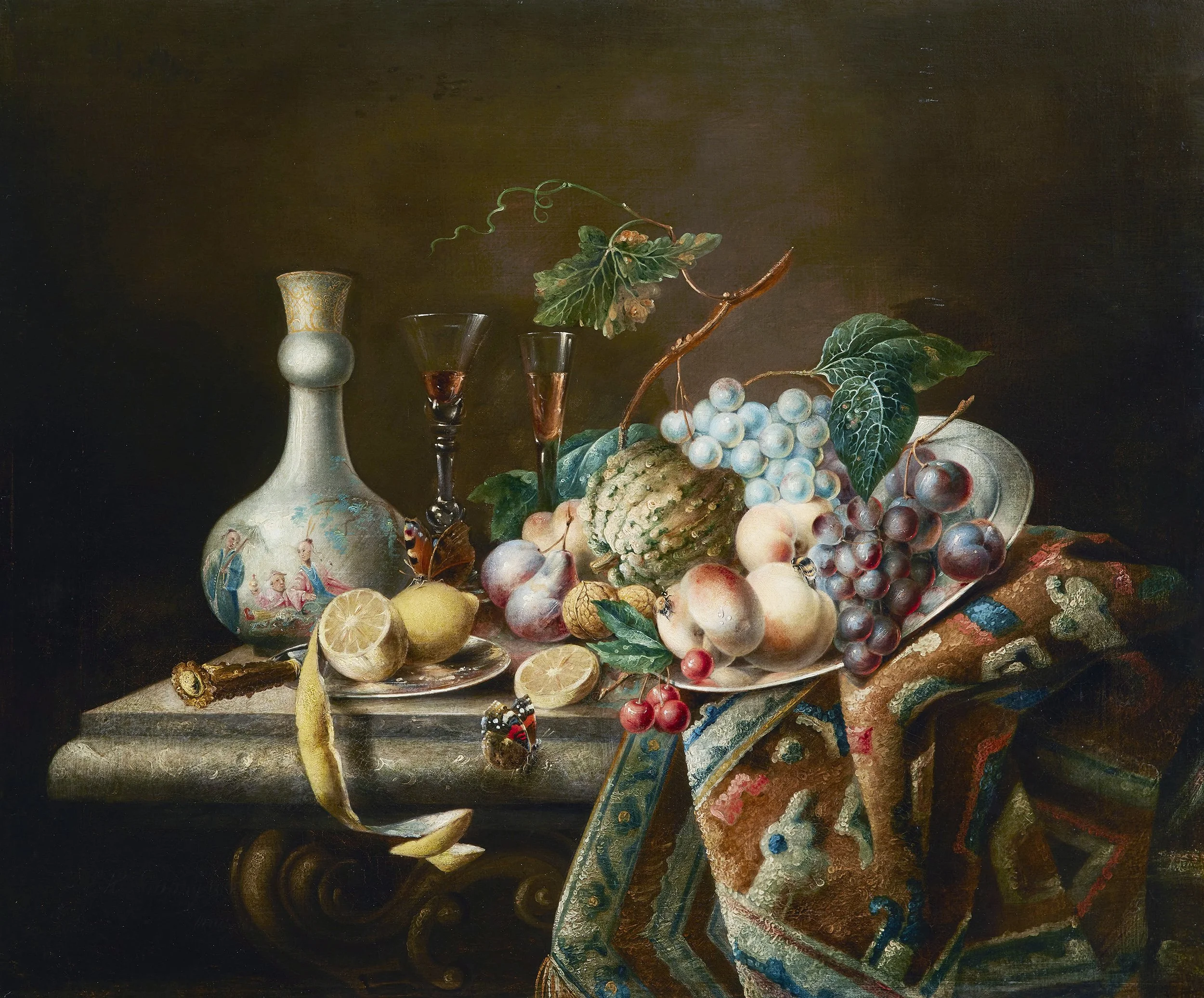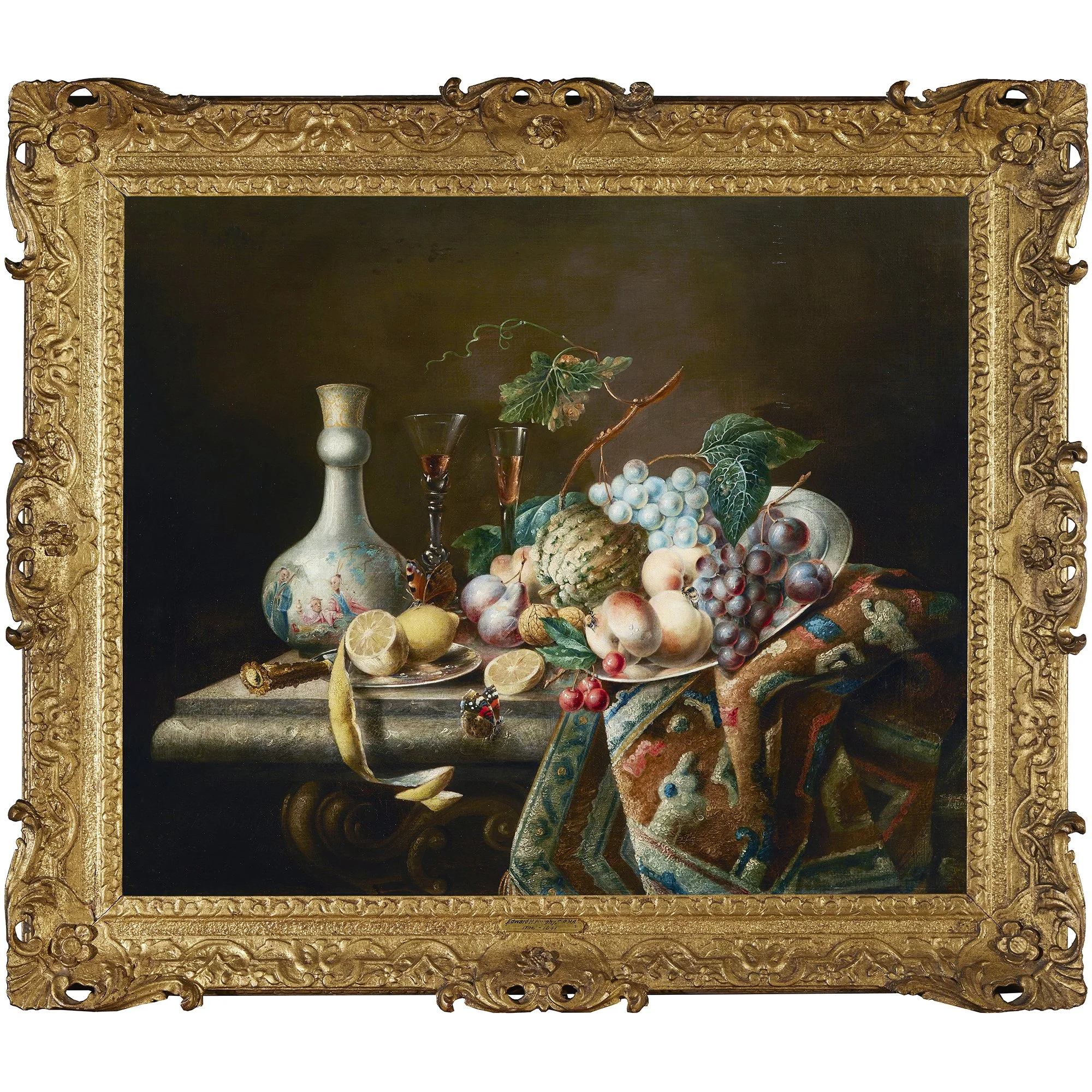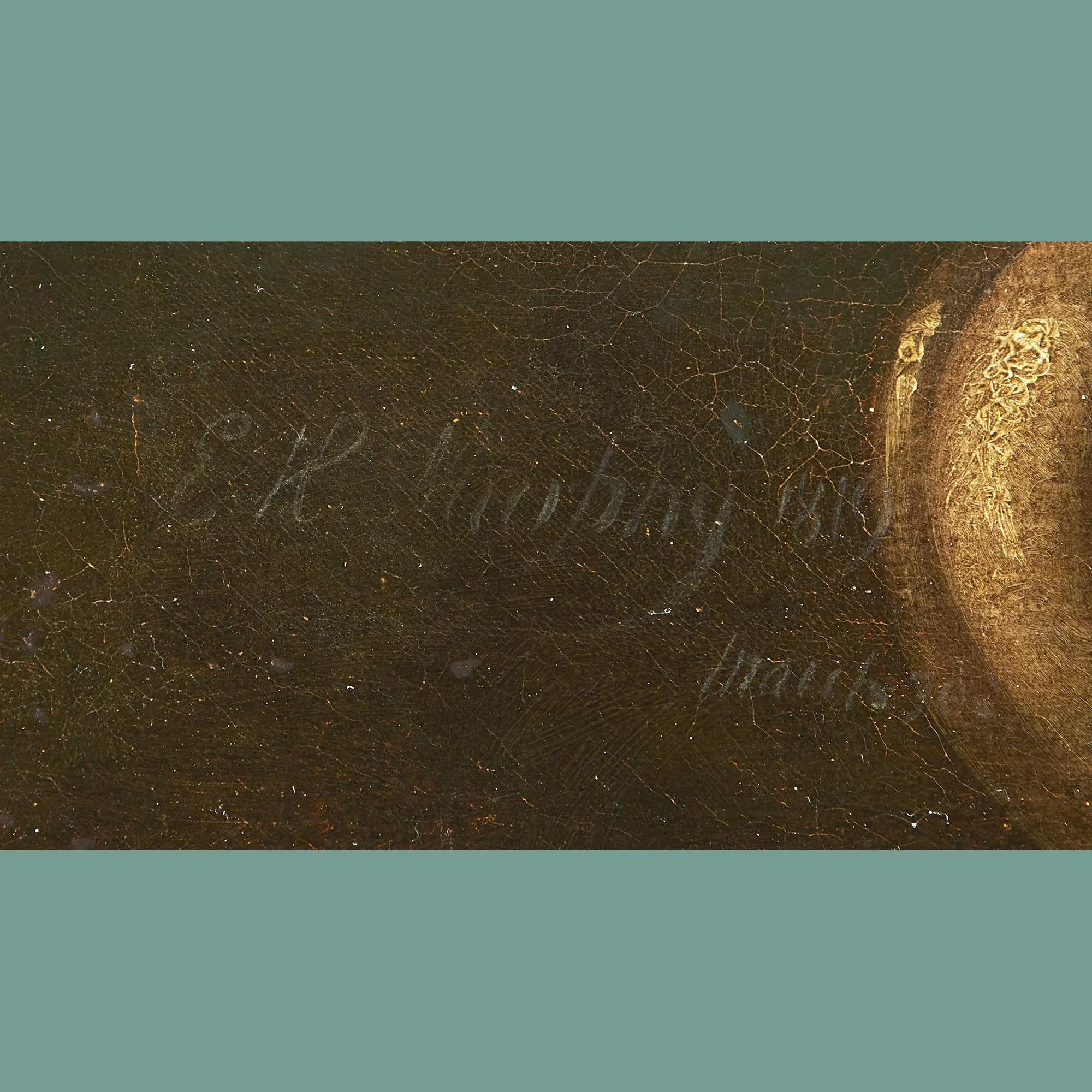Edward Henry Murphy A.R.H.A. c.1796-1841
SOLD
A Still life of Fruit, a Chinoiserie Porcelain Vase and Wine Glasses on a Marble Table Top
Oil on canvas, 64.2 x 77 cm.
Signed and dated ‘E. H. Murphy 1819 / March 30’ (illustrated)
In original gilt carved wood frame
Exhibited: probably, Dublin’s Society House, Artists of Ireland, 1819, no. 32, ‘Fruit &c, Composition’
Hitherto only one work was known by the ‘enigmatic’ Edward Henry Murphy (Art and Architecture of Ireland, Vol. 2, 384) making this a particularly significant – and pleasing – addition to the small body of Irish still-life painting. However ‘his only known extant painting’, Parroquets in the National Gallery of Ireland, has long ‘been recognised as a most accomplished work’ (it was only the second Irish painting to enter the NGI’s collection) and its quality, matched by the still-life published here, makes the loss of almost the entirety of Murphy’s oeuvre highly regrettable and, indeed, inexplicable. From a little before 1820, Murphy was an established presence on the Dublin art scene, advertising as a teacher and as a painter of landscape, fruit and flowers. Like William Brocas, he also produced caricatures for Dublin publishers, as well as some antiquarian prints.
Giving addresses in Spring Garden Parade and Dame Street, between 1826 and 1841 Murphy exhibited more than thirty works at the Royal Hibernian Academy and was elected an Associate in November 1829. These included landscapes of beauty spots near Dublin – his 1827 exhibit of a view on the Dargle was specifically designated as having been ‘painted on the spot’ – as well as bird and animal pictures (such as ‘oriental kingfisher’ or ‘lap-eared rabbits’) and fruit and flower pieces. Still-lifes in general and, in particular, compositions focused on flowers and fruit such as this are noticeably rare in Irish art. At the beginning of his career, William Ashford painted a few floral still-lifes, while Charles Collins and Charles Lewis both excelled at painting fruit. Here Murphy carries this eighteenth-century tradition into the Regency period and also looks to the great Dutch masters of illusionistic still life painting, displaying immense skill at differentiating the very different textures of the fruits – peach and cherry for example. The emphasis is very much on rich abundance and lavish display, with details such as the chinoiserie vase, gold-handled knife and oriental rug adding to the sense of magnificence. An exercise in bravura painting – very much in the Dutch tradition of the pronk stilleven, or the sumptuous still-life – here Murphy echoes Jan Davidsz de Heem (1606-1684) in the tilting platter of fruit, almost cascading into the composition, as well as William Kalf (1619-1693) in the enjoyment of portraying oriental ceramics and curling orange peel. However, Murphy, while nodding to the earlier tradition, makes something uniquely his own and, as with his famous Parroquets, displays great colouristic and compositional virtuosity. In 1978, Anne Crookshank and the Knight of Glin, noting that only a ‘single known work’ survived by Murphy, wrote that ‘it is astonishing that such a competent hand should disappear’. It has taken almost half a century for a second work by Murphy to surface, but this still-life only heightens appreciation for this ‘nearly vanished artist’ (Anne Crookshank and the Knight of Glin, The Painters of Ireland, 1978 p. 226).


